Working in silos has become one of the most frequently heard expressions in workplaces, but what does it mean and does it matter?
The historical definition of a silo is a container used on farms for storage of grains, but today the word has a more abstract meaning. It is often used as a symbol for teams that work towards the same objectives but operate independently without having any exchange of information with others. In simple terms, working in silos means working in a kind of bubble – on your own, as a part of a team or a department with limited perspectives.
Silos exist when employees in different teams or departments fail to share information and important knowledge with each other. While the expression “working in silos” may refer to a kind of devotion to a team or department within a company, it can also refer to a way of thinking. A person with a silo mentality often lacks the ability to think flexibly and see the whole picture.
Silo working have a lot of negative consequences, although your employees are experts with specialized skills, they might not see the bigger picture and fail to see risks that could be very harmful to the company. Siloed organizations lack collaboration, and the employees may not realize that they are working in silos. In fact, they might be very welcoming of opportunities to share their best practices, information, and knowledge with others but the structure and the way of working in the organization might not support it. Working in silos is rarely a consciously chosen mentality, but rather a result of a siloed corporate culture that does not provide opportunities for sharing information and different perspectives. Silos can seriously harm a business in all kind of ways if they are not mastered.
Working in silos leads to wasted time, costs and not to mention missed opportunities. Lack of collaboration and poor communication are the main reasons to many companies’ failures. As employees do not have access to relevant information, they spend time to research for crucial information that might already be available or duplicate orders for the same resources, silos can waste a lot of unnecessary expenses do significant harm on the productivity level.
Exchange of perspectives promotes creativity. Organizations that don’t encourage teams to interact with each other limit the employee engagement and amounts of new solutions and innovations. Silos do not only harm the operational part of an organization it can also turn into a problem for the cohesion in the workplace. Silos could lead to sour relations between teams, mistrust toward the leadership and deaden the motivation for coworkers who feel that they are incapable of changing the corporate culture.
To master silos, it is crucial to adapt a flexible mindset and maintain fresh perspectives, which is best done by inviting others to share their views and solutions to a problem. Collaboration and diversity are cornerstones of any successful company. By having a diverse team, with diverse backgrounds, it is more likely that picture becomes wider as diverse thinking is positively valuated.
Some meetings go fast and easy, especially when they consist of only like-minded people and when the agenda benefits our common goal. But when different interests collide and opinions about what is the best solution, loud and lively discussions often arise instead. A duel like situation about who is right and who has the best solution and who’s KPI is the most important to fulfil takes over the meeting. The other people invited to the meeting lose the interest to participate and start to check their phones and emails instead. Such inefficient meetings create neither activities, strengthen the team spirit nor contribute to solutions with particularly high acceptance, if there are even any solutions. Instead, they contribute to an increased polarization, friction and a low commitment that is deeply etched in the corporate culture.
It is only in the exchange of different views and perspectives that progress, and development can be achieved. Different perspectives can bring new ideas and maybe even better approaches than the “old way”. Diversity and inclusion require awareness, we need to realize what we are missing and ask for complementary views to understand the full picture. Focusing only on what we see for ourselves is a huge limitation in our capability to develop and perform in our daily work.
To handle the fact that people see different things we need to clarify how to use those insights in a meeting. Following common sense, it is best done by first establish a complementary background by listening to all and then use each and everyone’s expanded overview to look for a common agreement to guarantee high quality and acceptance of the solution.
The basic idea of a meeting run by the COD methodology is to handle meetings in a way that guarantees involvement, make them efficient, ensures understanding and contribution of all the participant and enriches the culture. A meeting that follows the COD methodology follows a clear structure to make sure that the company raises its standards. The reward of following the COD meeting structure is a meeting where all the participants want to listen to everyone. The leader but also all participants will receive new ideas and suggestions that will increase the possibilities of finding activities that can close the gap that was the reason for the meeting. This proves, that when we utilize the fact that we all have different perspectives of things we will see a complementary force in finding the best solution and the true value of a diverse team is reached.
